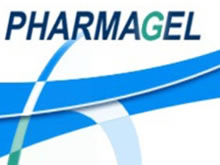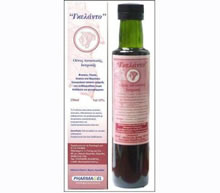
Λεξικό .. Molecular mechanisms in asthma
Molecular-mechanisms-in-asthma
The mast cell has been implicated in the bronchoconstriction of asthma for many years but, there is direct evidence for this was hard to find. In asthmatics bronchoalveolar lavage (BAL) recovers more mast cells than in normal subjects. Those mast cells found in BAL fluid from asthmatics exhibit higher spontaneous and IgE-induced secretion. On activation, human mast cells release numerous mediators, e.g. histamine, tryptase, prostaglandin D2 and leukotriene C4.
All these mediators can be detected at raised concentrations in lavage fluid from atopic asthmatics, and antagonists of the bronchoconstrictor mediators reduce bronchoconstriction. The early asthmatic response to allergen is a mast cell-dependent, rapid bronchoconstriction associated with a rapid rise in the plasma concentration of histamine and leukotrienes. The mast cells have also been implicated in bronchoconstriction brought about by non-allergic stimuli, such as exercise, isocapnic hyperventilation, hypertonic saline and adenosine challenge.
Whatever the type of asthma, eosinophils dominate the BAL picture. Eosinophils mediate microvascular leakage and epithelial damage by their ability to secrete highly toxic arginine-rich proteins (major basic protein, cationic protein, eosinophi-derived neutrotoxin and peroxidase). In addition, they can synthesise prostaglandins, PAF and leukotriene C4. Studies in primates and humans suggest that eosinophils are recruited from the circulation by specific leucocyte-endothelial adhesion processes. For example, as Wegner's group showed [1] the aerosol allergen challenge caused up regulation of endothelial leucocyte adhesion molecule (ELAM-1) and intercellular adhesion molecule (ICAM-1). Both the eosinophil infiltration and the change in bronchial responsiveness could be inhibited by using a specific monoclonal antibody to block the leucocyte binding site of ICAM-1. The late phase is different. There is an influx of both CD4+ T-lymphocytes and eosinophils. In parallel with this there is up-regulation of ELAM-1 and ICAM-1, together with VCAM-1 (vascular cell adhesion molecule). ELAM-1 functions mainly to recruit leucocytes, ICAM-1 recruits T-cells and VCAM-1 eosinophils. (See Adhesion molecules, Adhesion molecules in asthma and allergic diseases). It is now known that these up-regulations are, in part, due to cytokines, especially TNF-a, IL-1, and IL-4. Eosinophils and T-cells are caught by the vascular endothelium, pass between the endothelial cells and migrate up chemotactic factor concentration gradients.
Chemotactic factors include leukotriene B4, PAF and the cytokine IL-5. How eosinophils release their mediators after activation by the chemotactic factors is unknown, although these cells carry low affinity IgE 2 receptors, which are known to be up-regulated by IL-4 and IL-5. The sequence of events in the late phase reaction are unknown. Inspite of the potent leukotriene D4 antagonists are powerful inhibitors of the response. In asthma there is epithelial disruption of the airways epithelium. In laboratory, Holgate's group[2], investigated the mechanisms for disrupting epithelial integrity using monoclonal antibody to protein constituents of desmosomes. They were able to show that desmosomal links provide the major forms of attachment between suprabasal cells and basal cells. This could be the mechanism that is weakedned in asthma and which results in epithelial disruption.
Other laboratories have shown that activated eosinophils increase epithelial permeability with a time course that parallels the loss of suprabasal cell attachments. Once this disruption begins, homeostatic control over the fluid lining is lost and the body attempts to limit the damage by causing myofibroblasts to proliferate under the epithelium. These myofibroblasts lay down a layer of cross-linked collagen which stiffens the airway walls, limiting the capacity for bronchodilation. These myofibroblasts may also extend the survival of mast cells and eosinophils by producing cytokines, for example stem cell factor and GM-CSF. These cytokines, together with IL-1 and IL-8 from the epithelium, may maintain the inflammatory response after the allergic stimulus has gone. It has been established that during the late phase allergic response, the presence of CD4+ T-cells in BAL fluid is associated with increased production of IL-3, IL-4 and IL-5, but not IL-2 or interferon-Å¡. IL-3 is known to promote the growth and priming of basophils and mast cells, and IL-4 switches B-cells to IgE synthesis. IL-5 promotes the growth and priming of eosinophils. Holgate showed the presence of IL-4, IL-5, IL-6 and TNF-a in mast cells from biopsies of allergic mucosa. IL-4 could be released following IgE dependent activation. Human mast cells store and release TNF-a.
In addition, immunochemistry reveals that the number of IL-4+ cells is increased above normal in the nasal and airways mucosa of allergic subjects. IL-5 and GM-CSF have recently been shown to be produced by eosinophils. The production of cytokines by mast cells and eosinophils forms part of an amplification loop in allergic inflammation. Mast cells and basophils could be providing a "kick start" to allergic inflammatory events by producing IL-4, which up-regulates VCAM-1 in endothelial cells and stimulates the growth of TH2 lymphocytes. The knowledge of the inhibitory effects of corticosteroids on cytokine production coupled with our knowledge of the part played by cytokines in the inflammatory cascade now provdes a scientific basis for the early use of corticosteroids as first-line drugs in the treatment of asthma.
References
1. Wegner, C.D., et al: (1990) ICAM-1 in the pathogenesis of asthma. Science, 247, 456-459.
2. Holgate, S.: Molecular Mechanisms Involved in Asthmatic Airway Inflammation. In Molecular Biology of Asthma Satellite Symposium Proceedings. 1st Annual Congress of the European Respiratory Society. Sept. 1991 - Brussels. Schering-Plough International.
Γκέλης Ν.Δ. - Λεξικό Αλλεργίας - Εκδόσεις ΒΕΛΛΕΡOΦΟΝΤΗΣ - Κόρινθος 2013
Gelis Ν.D. - Dictionary of Allergies - VELLEROFONTIS Publications - Corinth 2013




